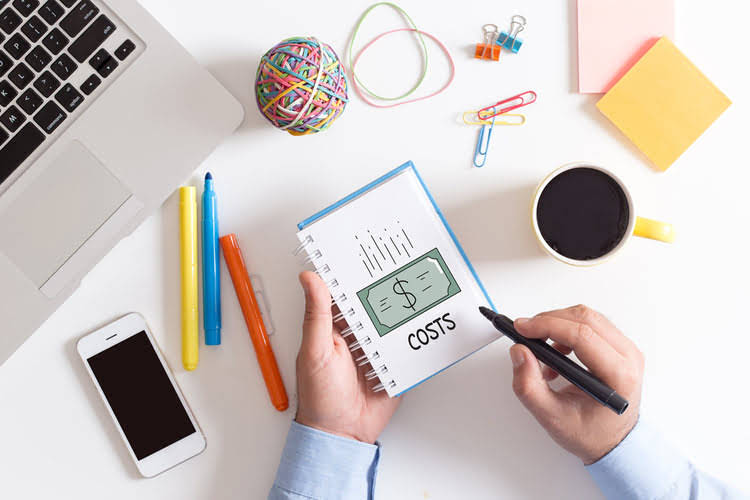
Right after this entry has been recorded, the check cashed, and the proceeds put in the box, there will be $100 in the box again, an amount which will match the general ledger account. In fact, there is always $100 in the box if you add up all the receipts and the cash (more or less, depending on the cash over/short situation). This system simply delays the recording of small expenses until the end of the accounting cycle or the fund is replenished. It’s not really an adjusting journal entry because there is an actual transaction being recorded.
Over And Short: Definition And What It Means In Accounting
- By understanding the causes and taking appropriate measures to address discrepancies, businesses can ensure the integrity of their financial statements.
- If a financial institution does not allow this option, the CD should not be treated as a cash equivalent.
- The monthly accounting close process for a nonprofit organization involves a series of steps to ensure accurate and up-to-date financial records.
- A firm should note instances of cash variances in a single, easily accessible account.
- Cash is obviously direct ownership of money, while cash equivalents represent ownership of a financial instrument that often ties to a claim to cash.
It can also be used when an employee must take money from the business’s accounts for personal reasons. In simple terms, Over and Short refers to the variance that arises when the amount counted during a physical count or cash reconciliation doesn’t match the amount recorded in the books. Cash Over and Short acts as a Revenue account when there is an overage. It’s “other revenue” for you, not a normal source of revenue like your paycheck. Cash Over and Short account is also used for Petty Cash overages and shortages.

How to Account for Credit Card Sales

Apple classifies its broad assortment of financial instruments as cash, Level 1 instruments, or Level 2 instruments (based on how the item is valued). The shortage journal entry is one of many bookkeeping entries used in accounting, discover another at the links below. This means that if there is more money than expected in your accounts, it will be recorded as an increase (debit) in this account; if there is less than expected, it will be recorded as a decrease (credit). To record the cash register overage the business needs to enter the cash over of 14 as part of the journal entry used to record the sales as follows.
How to Determine Net Income or Net Loss After Adjusting Entries
- Companies often hold cash and cash equivalents to pay short-term debt and hold capital in secure places for future use.
- A demand deposit is a type of account from which funds may be withdrawn at any time without having to notify the institution.
- GAAP does not treat cryptocurrency as cash, foreign currency, or cash equivalents.
- Cash is money in the form of currency, which includes all bills, coins, and currency notes.
Cash overages are normally recorded in a separate income statement expense account often referred to as the cash over/short account. Debit your cash short and over account in your journal entry by the amount of cash short. Alternatively, credit your cash short and over account by the amount of cash over. In the example, debit your cash short and over account by $10 to record the cash short amount.
Cash Over Journal Entry Example
A demand deposit is a type of account from which funds may be withdrawn at any time without having to notify the institution. Examples of demand deposit accounts include checking accounts and savings accounts. All demand account balances as of the date of the financial statements are included in cash totals. In this case one balance sheet asset (cash), has been increased by 1,414 when the cash is banked. When there is a cash shortage, it is treated as an expense; thus we recorded on debit. In contrast, when there is an overage, it is treated as income; thus we recorded on credit.
- In contrast, if we give too little change of cash to customers that means it is a gain for us.
- However, the company still needs to account for the cash overage or shortage with a proper journal entry in order to match the balance on the debit with the balance on the credit in the accounting system.
- Discrepancies in cash handling, known as cash over and short situations, can signal underlying issues that need immediate attention.
- A negative result represents a cash short amount, while a positive number represents a cash over amount.
- The cash short/over account is an expense account in the income statement of the business.
- The primary use of the cash over and short account is in cash-intensive retail or banking environments, as well as for the handling of petty cash.
Olympics give athletes a chance to win gold — and also cash in on their short time in spotlight

«You want to make sure that you’re balanced in terms of taking risk and generating sufficient returns,» he said. Cash equivalents are investments that can readily be converted into cash. The investment must be short-term, usually with a maximum investment duration of 90 days. If what is cash over and short an investment matures in more than 90 days, it should be classified in the section named «investments». Cash equivalents should be highly liquid and easily sold on the market. Kevin Johnston writes for Ameriprise Financial, the Rutgers University MBA Program and Evan Carmichael.
They may also provide recommendations for enhancing procedures to mitigate future occurrences. In accounting, cash over and short journal entry is usually made when the company replenishes its petty cash fund. This is due to the cash remaining and the receipts in the petty cash box may not equal the amount of petty cash fund established. Cash and cash equivalents are the most liquid current assets on a company’s balance sheet.
- Tracking Cash Over and Short is an important piece of protecting a company’s most valuable asset, Cash, from theft and misuse.
- By fostering a culture of continuous improvement and accountability, businesses can minimize the likelihood of cash handling errors.
- The journal entry to record this sale would debit cash for $101, credit sales for $100, and credit cash over short for one-dollar.
- It may seem like a small item to track, but think of it from the point of view of a retail or restaurant chain where millions of dollars pass through the cash registers every day.
- There has been a steady decline in payments using cash over the last decade, particularly as consumers turn to contactless cards for everyday purchases.
